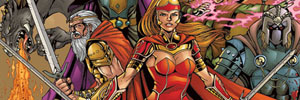Additionally, a number of the ships had their 40 MM mounts replaced by 3”/50s
The HP and LP turbines were connected in series with respect to steam flow and in parallel mechanically into the reduction gear
The surface to surface torpedo essentially disappeared from the post war fleet, although destroyer types were later fitted with anti-submarine homing torpedoes.
- Two quad (4 barrel) 40 MM AA gun mounts – These replaced the forward torpedo mount.
- Three twin (2 barrel) 40 MM gun mounts
- Two depth charge tracks
- Six depth charge projectors
- Six 20 MM gun mounts
After the war all 20 MM gun mounts were removed and the forward 40 MM mounts were replaced by a pair of ahead thrown anti-submarine projectile (Hedgehog) mounts.
Fletchers were the first destroyers to be fitted with radar. The ships carried surface search, air search, and fire control radars. The surface search radar had a range out to the horizon (about 10-12 miles) while the air search (when it worked) could see out to about 40-45 miles. The fire control radar was used strictly for control of the 5” gun battery.
The CIC later evolved into the major nerve center for conducting all surface, subsurface, and anti-air/missile operations aboard naval ships
The advent of radar resulted in a new space being created, called the Combat Information Center (CIC). On Halsey Powell, it had been converted from what was originally the unit commander’s cabin.
The ships were propelled by a twin screw steam propulsion plant rated at 60,000 HP that could produce a maximum speed somewhere between 35 and 37 knots. Considering that this was with 1930s technology, this was a very respectable level of power and it would still be considered as such today.
Superheated steam was generated in four oil burning boilers at a pressure of 600 pounds per square inch and a temperature of 850° F. Two boilers were installed in each fire room. Each of the two stacks served a pair of boilers. The boilers were of the divided furnace or “M” type with pressure and temperature (superheat). These boilers were used on nearly all World War II era carriers, battleships, cruisers, and destroyers. A disadvantage of this type of boilers was that they imposed some definite limitations on the ability to conduct low speed maneuvering on short notice.
There were two cross compounded geared steam turbine main engines. Each engine consisted of a high pressure (HP) and low pressure (LP) turbine set driving https://i.ytimg.com/vi/6as-EM9YpIg/maxresdefault.jpg” alt=”sportovni seznamovacà weby”> its associated propeller shaft through a double reduction gear. The rated output of each engine was 30,000 HP at a propeller speed of 395 RPM. A smaller cruising turbine was mounted on the front end of the HP turbine. Astern elements were provided in the LP turbine. To go astern you had to shut off steam to the ahead turbines before you could admit steam to the astern turbine. Control was manual; by hand wheels mounted on a large gage board adjacent to the engine in response to engine order telegraph signals from the bridge.
The electrical plant consisted of two 350 kW 450 VAC steam turbine driven ship service generators (SSTG), one in each engine room plus a 100 kW emergency diesel generator located in the forward part of the ship. By comparison, a modern destroyer has three 2500 to 3000 kW generators.
Machinery spaces were in an echelon arrangement, with alternating fire rooms and engine rooms. The starboard shaft was about 75′ longer than the port shaft. This provided for redundancy in the event of battle damage and it remains the practice today on twin screw naval vessels. From forward to aft, the spaces were:
Category: Uncategorized










